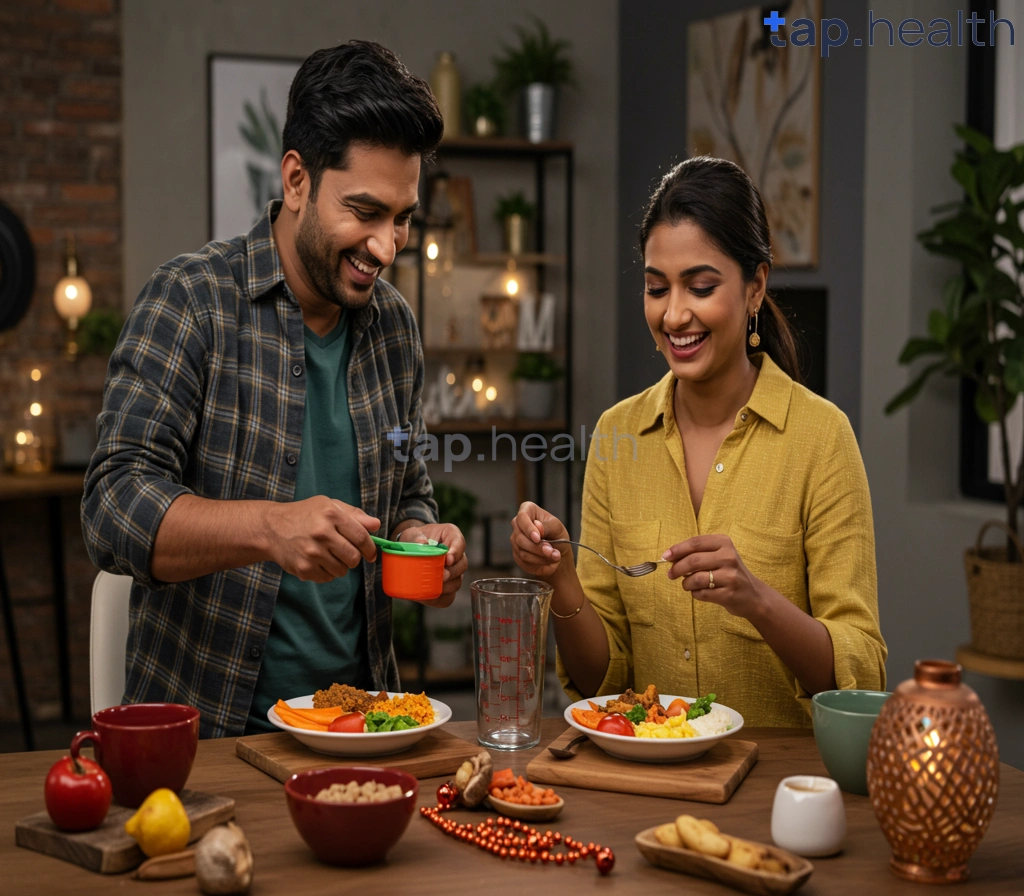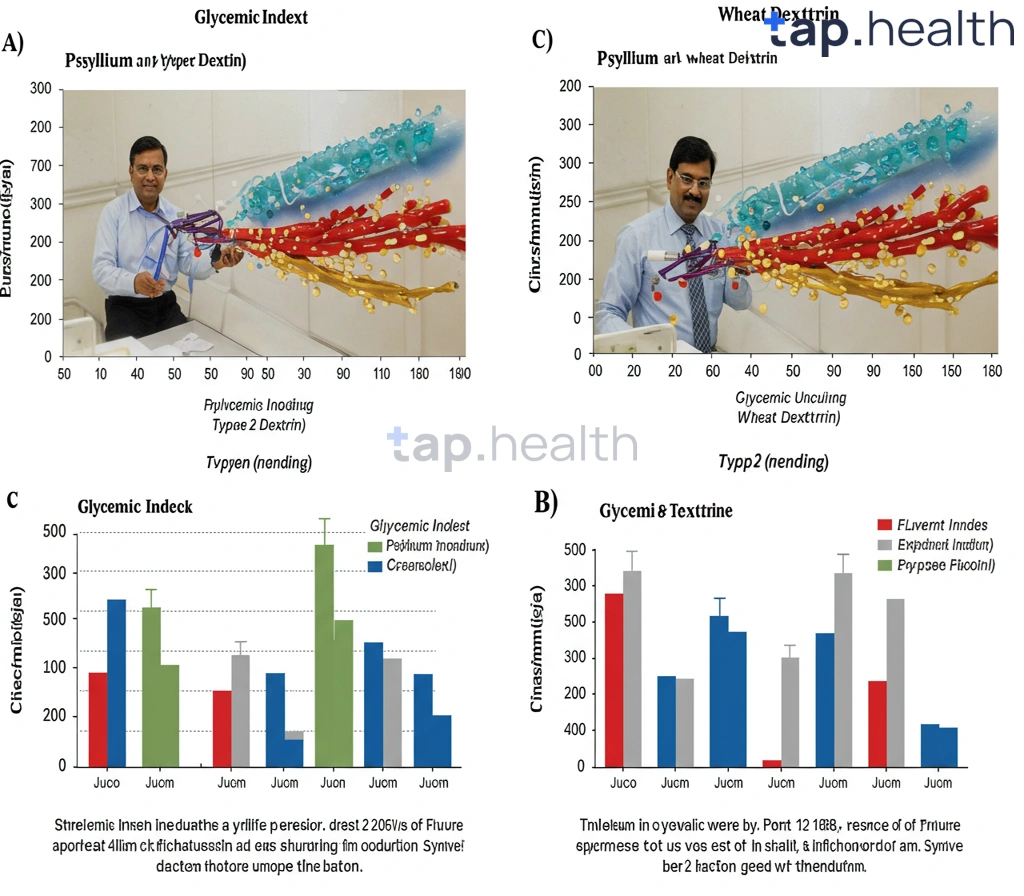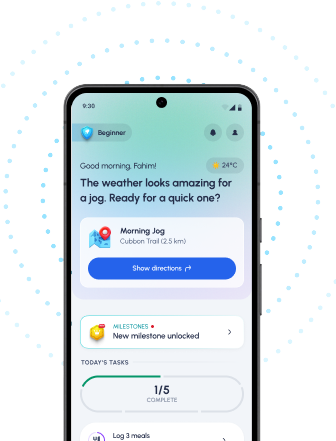Table of Contents
- Diabetes-Friendly Holiday Feast: A Guide to Healthy Eating
- Holiday Meals & Diabetes: Smart Swaps for Delicious Dishes
- Navigating Holiday Buffets: Portion Control Tips for Diabetics
- Enjoy the Holidays, Manage Your Diabetes: Healthy Recipe Ideas
- Your Diabetes & the Holidays: Creating a Healthy Meal Plan
- Frequently Asked Questions
- References
The holidays are a time for joy, family, and…delicious, but often challenging, meals. For those living with diabetes, Navigating Holiday Meals: Healthy Eating Tips for People with Diabetes can feel like a tightrope walk between enjoying festive treats and managing blood sugar levels. Don’t worry, you don’t have to miss out on all the fun! This blog post is packed with practical tips and strategies to help you savor the season and keep your health in check. We’ll explore simple ways to make smart food choices, manage portions, and enjoy the holidays without the guilt. Let’s dive in and discover how to make this holiday season your healthiest yet!
Diabetes-Friendly Holiday Feast: A Guide to Healthy Eating
The holiday season brings an abundance of delicious food, but managing diabetes requires mindful choices. Many people with diabetes aim for approximately 45-60 grams of carbohydrates per meal, although individual needs vary significantly. This guide offers practical tips for navigating festive meals in Indian and tropical countries, ensuring you enjoy the celebrations without compromising your health.
Smart Carbohydrate Choices
Prioritize complex carbohydrates like whole-grain rotis, brown rice, and quinoa over refined options like white rice or sugary desserts. These release glucose into the bloodstream more slowly, helping to manage blood sugar levels. Incorporate plenty of fiber-rich vegetables like okra, spinach, and bitter gourd, common and readily available in many Indian and tropical cuisines. These add volume to your meals without significantly impacting carbohydrate intake.
Portion Control and mindful eating
Remember that portion control is key. Even healthy foods can affect blood sugar if eaten in excessive quantities. Start with smaller portions and allow yourself time to feel full before taking seconds. Practice mindful eating—pay attention to your body’s signals of hunger and fullness, savour each bite, and avoid distractions while eating. Consider using smaller plates to manage portions visually. For more ideas on creating delicious and healthy holiday meals, check out our blog on Creating Diabetes-Friendly Dishes for the Holidays.
Healthy Swaps and Spices
Swap sugary desserts for naturally sweet options like fresh fruits. Many tropical fruits, like mangoes and papayas (in moderation), can provide sweetness without the same glycemic impact as processed treats. Utilize the rich array of spices available in Indian and tropical cuisines. Spices like turmeric, cinnamon, and ginger not only add flavour but may also offer potential health benefits in managing diabetes.
Staying Hydrated
Drink plenty of water throughout the day. Staying hydrated helps your body function optimally and can aid in blood sugar control. Consider incorporating refreshing coconut water or herbal teas into your hydration strategy. And if you’re planning any travel during the holidays, remember to check out our tips on Traveling with Diabetes: Essential Tips for a Safe & Healthy Journey to ensure a smooth and healthy trip.
Remember to consult your doctor or a registered dietitian for personalized advice tailored to your specific needs and dietary requirements. Enjoy the festive season responsibly and healthily!
Holiday Meals & Diabetes: Smart Swaps for Delicious Dishes
The festive season often brings an abundance of delicious, but sometimes unhealthy, food. This is especially challenging for the 61% of people with diabetes aged between 20-64 years, and the 39% aged 65+ in India and tropical countries, as highlighted by the IDF Diabetes Atlas. However, enjoying the holidays doesn’t mean sacrificing your health. With a few smart swaps, you can savor traditional flavors while managing your blood sugar levels effectively.
Managing Carbohydrates
Many traditional Indian and tropical holiday dishes are rich in carbohydrates. Instead of relying heavily on white rice or sugary desserts, consider substituting them with healthier alternatives. Brown rice, quinoa, or even a portion of vegetables can significantly reduce the glycemic impact of a meal. For desserts, opt for options made with natural sweeteners like jaggery or fruits, or explore recipes that incorporate nuts and seeds for added texture and fiber. For more ideas on healthy substitutions, check out Easy Diet Swaps to Improve Your Nutrition.
Portion Control & Healthy Fats
Remember, portion control is key. Even healthy foods can contribute to high blood sugar if consumed in excessive amounts. Focus on smaller portions of your favorite dishes and balance them with plenty of non-starchy vegetables like leafy greens, gourds and beans. Incorporate healthy fats, like those found in nuts, avocados, and olive oil, which can help promote satiety and better blood sugar management. Remember, mindful eating is paramount. Learning about the best foods to incorporate into your diet can also be beneficial, so consider reading 20 Best Foods for People with Diabetes – Tap Health.
Spice Up Your Life
Many spices commonly used in Indian and tropical cuisines, such as turmeric, cinnamon, and ginger, have anti-inflammatory and blood sugar-regulating properties. Incorporate these spices generously into your holiday meals to enhance flavor and potentially improve your metabolic health.
Prioritize Your Well-being
This holiday season, prioritize your health without sacrificing enjoyment. By making conscious food choices and incorporating these simple tips, you can celebrate with confidence and maintain healthy blood sugar levels. Consult your doctor or a registered dietitian for personalized advice tailored to your specific needs and preferences.
Navigating Holiday Buffets: Portion Control Tips for Diabetics
Smart Strategies for Festive Feasts
The holiday season brings an abundance of delicious food, but for individuals with diabetes, navigating buffets requires careful planning. Remember, consistent blood sugar management is crucial to prevent serious complications, including the risk of foot ulcers – a condition affecting nearly 15% of diabetics, sometimes leading to amputation. Let’s explore practical strategies to enjoy holiday meals without compromising your health.
Prioritizing Plate Composition
Start with non-starchy vegetables like spinach, beans, and salads. These fill you up without significantly impacting blood sugar. Then, choose a lean protein source such as grilled fish or chicken, mindful of portion size. In many Indian and tropical cuisines, plenty of fresh, vibrant vegetables are available – prioritize these! Finally, select a small portion of carbohydrates, such as rice or roti, remembering that even healthy carbs affect blood sugar levels. For more detailed information on making healthy food choices, check out Nutrient Density in Diabetic Meal Plans: Prioritizing Quality Foods.
Mindful Portioning Techniques
Use smaller plates to naturally control portions. Avoid piling your plate high; instead, take a small amount of each dish and go back for seconds only if truly needed. Many Indian and tropical celebrations involve sharing dishes – take advantage of this cultural aspect to control portions naturally. Remember, it’s okay to say no to certain dishes if you feel you’ve reached your limit.
Hydration and Healthy Choices
Drink plenty of water throughout the meal to help you feel full and satisfied, reducing the urge to overeat. Opt for water-based beverages over sugary drinks like sodas or juices. Choose dishes prepared with healthier cooking methods like steaming, grilling, or baking instead of frying.
Staying Active and Managing Blood Sugar
Even during the holidays, maintain a regular exercise routine as much as possible. Physical activity helps regulate blood sugar levels and contributes to overall well-being, reducing the risks associated with diabetes, including the risk of foot complications. Remember to check your blood sugar regularly and adjust your insulin dosage accordingly as needed. Prioritizing your health allows you to enjoy these festive occasions safely. Consult your doctor or a certified diabetes educator for personalized guidance. And if you’re wondering about specific foods, like whether you can safely enjoy a hamburger, Can a Diabetic Eat Hamburger? Tips for Enjoying It Safely offers some helpful advice.
Enjoy the Holidays, Manage Your Diabetes: Healthy Recipe Ideas
Sweet Treats with a Savory Twist
The holiday season in India and tropical countries is brimming with delicious sweets and rich dishes. However, managing diabetes requires mindful choices. Did you know that daily consumption of sugary beverages raises diabetes risk by 26%? This statistic highlights the importance of making healthier swaps during festive celebrations. Instead of traditional mithai laden with sugar, consider lighter alternatives. For instance, try using jaggery (gur) or natural sweeteners like dates or honey in moderation. Explore recipes that incorporate fresh fruits like mangoes, pineapples, or bananas for natural sweetness.
Savory Delights & Portion Control
Focus on incorporating plenty of vegetables and lean proteins into your meals. Dishes like sambar, rasam, or curries made with coconut milk (in moderation) can be satisfying and flavorful. Remember, portion control is key. Even healthy dishes can contribute to high blood sugar levels if consumed in excessive amounts. Opt for smaller portions and savor each bite. Consider adding spices like turmeric and cinnamon, known for their potential anti-inflammatory properties. For more tips on effective diabetes management, check out this helpful guide: 10 Proven Tips to Effectively Manage Diabetes | Simple Guide.
Regional Adaptations & Festive Fun
Adapt traditional recipes to suit your dietary needs. Many regional dishes can be modified to reduce sugar and increase fiber content. For example, instead of fried snacks, explore baked or air-fried options. Engage with family and friends, sharing your healthy choices and inspiring others to make conscious decisions. Remember, celebrating the holidays doesn’t mean compromising your health; it’s about finding a balance and enjoying the festivities responsibly. Consult your doctor or a registered dietitian for personalized dietary advice tailored to your individual needs and the specific cultural foods prevalent in your region. Learning more about diabetes management can significantly improve your quality of life; we recommend reading 10 Proven Tips for Effective Diabetes Management for practical strategies.
Your Diabetes & the Holidays: Creating a Healthy Meal Plan
The holiday season in India and tropical countries is a vibrant tapestry of delicious food and festive gatherings. However, for individuals with diabetes, navigating these celebrations requires careful planning. Remember, managing blood sugar levels is crucial, especially considering that diabetes is linked to a 70% increased risk of sleep apnea and related sleep disorders, impacting your overall well-being. A well-planned meal strategy can help mitigate these risks and ensure you enjoy the festivities without compromising your health.
Prioritizing Portion Control and Smart Choices
The key to healthy holiday eating lies in mindful portion control and strategic food selection. Focus on lean protein sources like fish, chicken, or lentils, common in many Indian and tropical cuisines. Incorporate plenty of fiber-rich vegetables like spinach, okra, or bitter gourd, which are readily available and beneficial for blood sugar regulation. Instead of indulging in sugary desserts, opt for healthier alternatives like fresh fruits or small portions of traditional sweets, perhaps made with jaggery instead of refined sugar. Remember, even seemingly healthy options should be consumed in moderation. For more tips on healthy eating and weight management, check out our guide on How to Lose Weight with Diabetes Diet Plan.
Hydration and Balanced Meals
Staying well-hydrated is crucial, especially in warmer climates. Drink plenty of water throughout the day, and consider incorporating herbal teas like tulsi or ginger tea, popular in the region. Construct your meals around a balanced approach, ensuring each plate includes a good balance of carbohydrates, proteins, and healthy fats. This will help prevent sharp spikes and drops in blood sugar levels, improving your overall health and sleep quality. As you age, managing diabetes can present unique challenges. Learn more about Managing Diabetes as You Age: Challenges and Solutions.
Planning Ahead for Success
Planning your meals ahead of time can significantly reduce stress and impulsive eating. Decide on healthy options before attending gatherings, and don’t hesitate to politely decline dishes that don’t fit your dietary needs. Remember, celebrating the holidays is about spending time with loved ones, not just about the food. By preparing and sticking to your plan, you can enjoy the festivities without compromising your health and well-being. Consult your doctor or a registered dietitian for personalized advice tailored to your specific needs and preferences. Happy and healthy holidays!
Frequently Asked Questions
Q1. What are the best food choices for managing diabetes during the holidays?
Prioritize complex carbohydrates like whole grains, brown rice, and quinoa, along with fiber-rich vegetables. Practice portion control and choose fresh fruits over sugary desserts. Incorporate healthy fats and spices like turmeric and cinnamon.
Q2. How can I adapt traditional holiday recipes to better suit my diabetes management?
Use readily available ingredients to create healthier versions of traditional dishes. Focus on substituting sugary ingredients with healthier alternatives like spices and fresh fruits. Remember portion control is key.
Q3. What are the potential health risks of poorly managed diabetes, especially during the holidays?
Uncontrolled blood sugar can increase the risk of serious complications such as foot ulcers and sleep apnea. Consistent blood sugar management through balanced meals and regular exercise is crucial.
Q4. How important is exercise and hydration in managing diabetes during the holidays?
Staying hydrated is essential, and regular exercise plays a vital role in managing blood sugar levels. Make time for physical activity even during busy holiday periods.
Q5. Should I consult a healthcare professional for personalized advice?
Yes, it’s always recommended to consult your doctor or a registered dietitian for personalized guidance on managing your diabetes, especially during the holidays. They can help you create a plan tailored to your specific needs and circumstances.
References
- A Practical Guide to Integrated Type 2 Diabetes Care: https://www.hse.ie/eng/services/list/2/primarycare/east-coast-diabetes-service/management-of-type-2-diabetes/diabetes-and-pregnancy/icgp-guide-to-integrated-type-2.pdf
- Children with Diabetes : A resourse guide for families and school. : https://www.health.ny.gov/publications/0944.pdf




